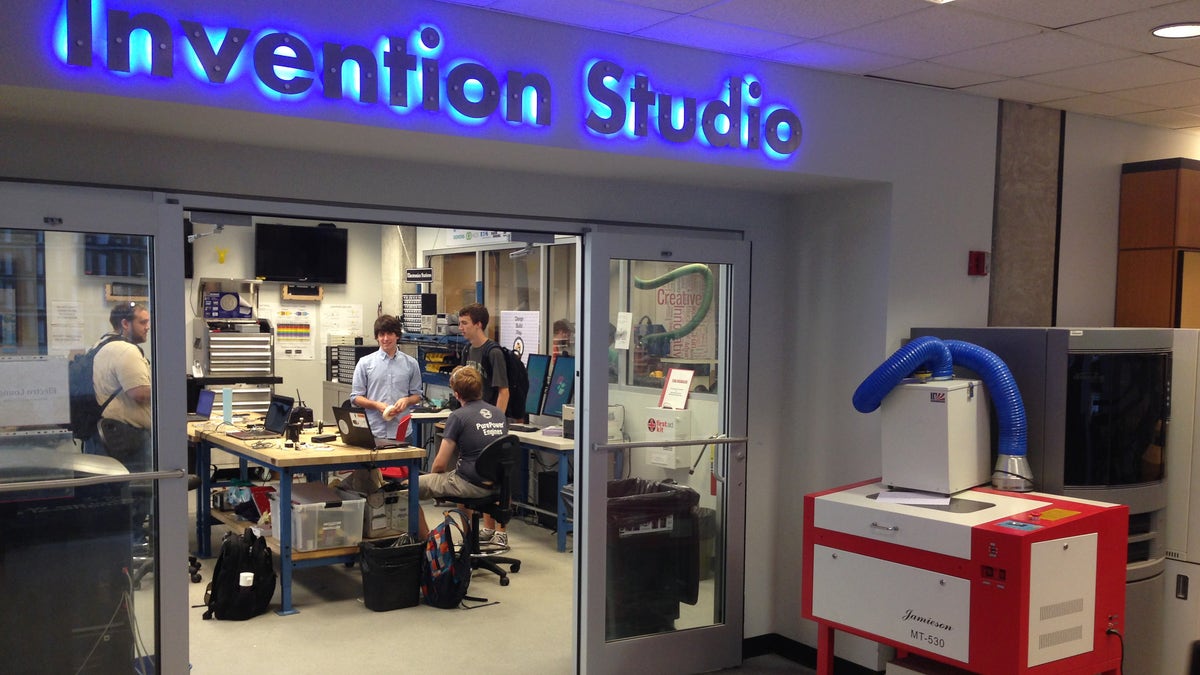
(Fox News/Staff)
Some inventors say it’s not just a fad, but a new industrial revolution. Peoples’ renewed desire to build things with their own hands is attracting everyone from artists to engineers to the “maker movement.”
“Imagine arts and crafts meets Popular Science and Popular Mechanics at Dragon Con,” said Roy Craft, director of program development at the Georgia Institute of Technology’s Professional Education division. “It’s a little bit of everything.”
On its Atlanta campus, Georgia Tech houses its ‘Invention Studio.’ The student-run design, build and play space is a high-tech version of the high school shop classes of generations past.
“When we started to lose manufacturing, there was a lot of effort at the corporate, the industrial, and government level to reclaim manufacturing and start figuring out how to get ‘American made’ back,” Craft said. “And one of the things that a lot of those people realized is we didn’t have a pipeline of people who knew how to make things.”
Outside of the academic environment, grassroots efforts are launching “maker spaces” out in the community. Members of the Atlanta non-profit Freeside have produced everything from three-dimensional art to breakthroughs in foot surgery.
“One of our members, Nick Giovinco, basically 3-D printed CT scans and used the 3-D printed foot for pre-surgery planning,” explained Steven Sutton, who serves on Freeside’s board of directors. “It dramatically reduced the surgery time - it was a huge success.”
Dr. Giovinco’s findings are published in The Journal of Foot and Ankle Surgery.
“The coolest thing about this space is the possibilities,” said Randy Farmer, who also serves on the Freeside board. “This is the garage shop that I would have if I had infinite money and infinite space for a garage.”
But unlike a garage workshop, where many do-it-yourselfers work alone, maker spaces encourage collaboration among an eclectic group of skill sets.
“Somebody might be a very skilled machinist, but they want to learn about electronics,” Sutton said. “Or somebody might be an industrial designer, but they really want to learn about the manufacturing processes to understand them better.”
In today’s digital world, the collaboration and mentoring that take place in maker spaces help beginners overcome any learning curves when it comes to making physical objects.
“In many ways, an iPad can be just like a TV set,” said Dale Dougherty, CEO of Maker Media. “You’re just consuming something that someone else made. I want you to make things for yourself.”
Dougherty’s company publishes Make: magazine and produces “Maker Faire” events around the country — both chronicling and catering to a movement that he believes will transform passive consumers into active creators.
“I believe we’re not gonna buy our future - we’re gonna make our future,” Dougherty said. “We have to figure out what needs to be made and how to make it.”
